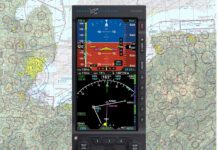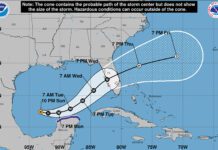Pulling The Rug
One of the really neat technologies that has filtered down to personal aircraft in recent years is the FAAs Traffic Information Service (TIS). The TIS is a Mode S Data Link service that delivers automatic traffic advisories to pilots. According to the FAA, TIS provides an affordable means to assist the GA pilot in visual acquisition of surrounding air traffic. The TIS data stream includes location, direction, altitude and climb/descent information of nearby aircraft. The result is improved communication between aircraft and air traffic control (ATC), providing U.S. pilots with greater traffic awareness in busy terminal areas, says the company. All good stuff, right?
Because TIS works with approach-control radars like the existing ASR-9, the service is not available outside of terminal airspace. But thats where its needed most, and operators have shown little reluctance to install a new Mode S unit when they go transponder shopping.
Theres only one small problem-the FAA is actively upgrading its ASR-9 radars to the ASR-11, which doesnt support TIS. The AOPA says the FAAs unilateral decision will leave service gaps for the more than 12,000 pilots who have invested in this technology. In other words, TIS will no longer work within terminal airspace at which the radar has been upgraded to ASR-11.
According to AOPA, the FAA never discussed this change with the user community. Which is ironic considering the years of effort that went into rolling out TIS and its data-link sibling, FIS, or Flight Information Service, which provides textual weather information and Pireps. Adding fuel to the fire, various people familiar with the ASR-11s architecture tell Aviation Safety that adding the ground-based equipment necessary for TIS to the new radars can be done at relatively little expense to the agency.
The FAAs grand plan is for operators to install the equipment needed for and to use ADS-B, or Automatic Dependent Surveillance-Broadcast. The ADS-B standard has been undergoing years of field tests-most notably as part of the Capstone program in Alaska-but still isnt ready for prime time. Instead, the FAA is now focused on the Safe Flight 21 (SF21) effort, which is designed to demonstrate and validate, in a real-world environment, the capabilities of advanced surveillance systems and air traffic procedures associated with free flight. The ADS-B system and TIS-B-Traffic Information Service-Broadcast-are enabling technologies for SF21 and will require operators who desire SF21 to upgrade their airborne equipment yet again. But SF21 isnt mature technology. Given the FAAs breathtaking inability to field any new ATC-related equipment on-time and on-budget, were not convinced it ever will be.
In the meantime, GA operators stand to lose their TIS data at certain terminals, with the result of slightly less-safe operating environments. And theres no reliable estimate on when SF21 technologies will be implemented.
Pulling out this rug from under GA will have an adverse impact on safety and doesnt make operators want to upgrade to the next big thing the FAA tries to sell us. Think about it, FAA.
-Jeb Burnside



